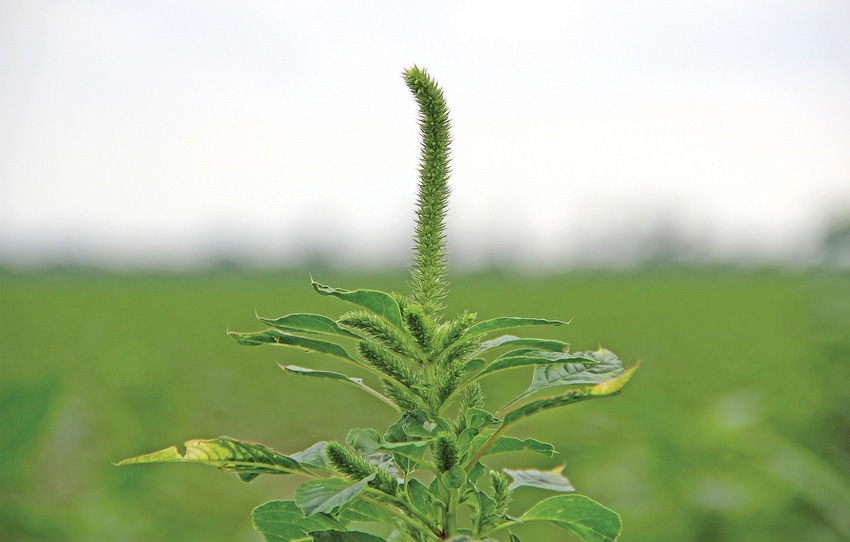September 4, 2015

Harvest is in full swing in Arkansas. Last week I drove from Newport to Stuttgart and saw milo, corn, rice and soybean all being harvested. For many this is good news — the payoff after a long year of working to get the crop to this point. Many folks like to be done, but what you do this fall during and post-harvest can have significant impacts on weed populations in 2016.
In the South there are usually many growing days between harvest and the first killing frost. Most of our herbicide programs have worn off by now, so once a field is cut — whatever the crop — it opens up the canopy and late-season weeds can emerge and ones that have already emerged but were suppressed by the crop can gain a foothold and have time to reproduce.
This is especially true for pigweed. I have observed pigweeds that have emerged behind our corn plots, come up and go reproductive at about 6 to 8 inches tall and make viable seed before a frost. This is also common in soybean and milo fields that are not planted to wheat.
It might not be as common in rice, but we do have pigweeds on the levees that can re-seed a field that otherwise was in a great rotation to deplete the pigweed soil seedbank.

Click to open
Fall tillage following harvest is an effective means of controlling weeds, but in some areas where no-till practices are being followed, it’s just not an option.
We have herbicide recommendations in our MP44 Weed Control Guide that address post-harvest options behind corn and some other crops. In general, the herbicides we are talking about are paraquat, 2,4-D, Sharpen and Dual for residual, I am sure there are others (if I left yours out, let me know and we will get it added).
Many companies are adding fall or post-harvest options to their labels for this purpose. Be aware of re-crop intervals before choosing a product. Also, watch out for sensitive crops in the area — your neighbor’s field might be at a sensitive stage for drift from some of these chemicals.
New technology is on the way in the area of harvest weed seed destruction and post-harvest seed destruction. I think this will result in a significant change in the way we control weeds and reduce the weed soil seedbank in many fields.
Right now my research counterpart, Jason Norsworthy, has done work looking at windrow burning and the results have been pretty amazing. By concentrating combine trash into a windrow and then burning it, he has significantly reduced pigweed populations the following year. I will be working with Jason on a wheat project looking at the effect of this type of burn on ryegrass in wheat starting in some test plots this fall.
In addition to the windrow burning, a new technology is on the horizon that will actually destroy weed seed as it goes through the combine. If you want more information on this, do a Google search on the Harrington Seed Destructor. Jason has been working closely with our weed science colleagues in Australia on this type of weed control and we appreciate their cooperation.
Don’t walk away and let a clean field go to seed this fall, it can ruin an otherwise great opportunity to reduce weed populations and save some real dollars in 2016.
What's your program at harvest and after for controlling pigweed and other resistant weeds? Share in the comments section below.
You May Also Like




